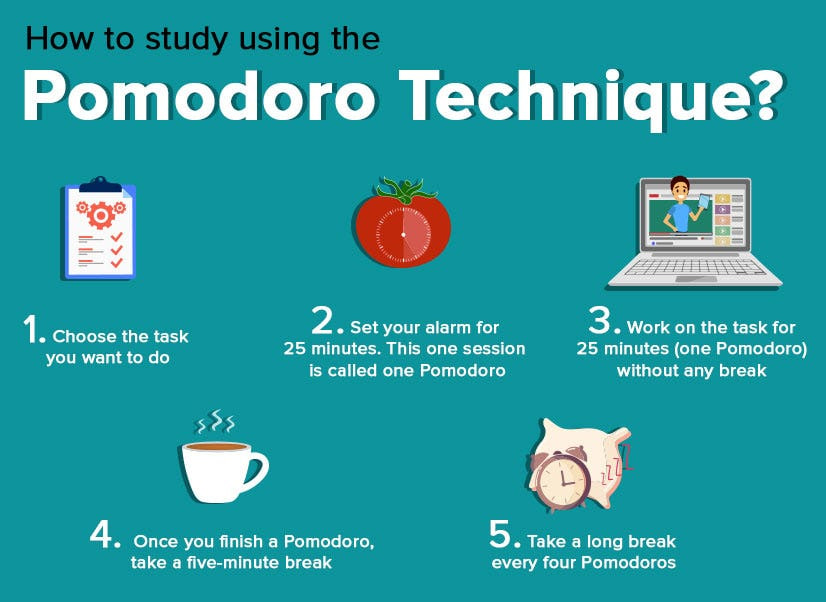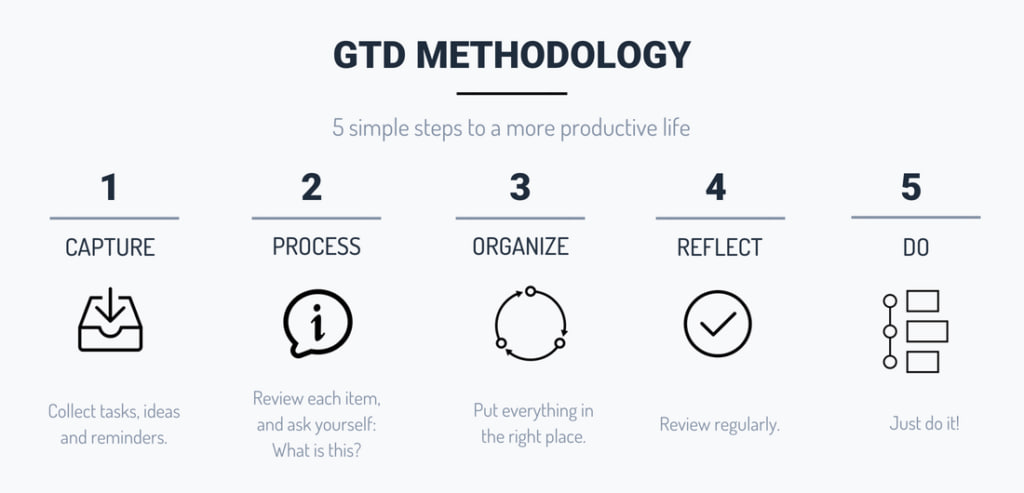7 Effective Time-Management Techniques
Most people complain about a lack of time and inability to strike a life-work balance. Therefore, several studies have been conducted on time management and productivity improvement. This article presents a set of scientifically proven time management strategies to help you maximize your time and beat procrastination.
What Is Time-Management?
Time management is a skill that involves creating action plans for daily tasks and prioritizing them to effectively invest in time, complete important projects, and meet agreed-upon deadlines. The concept also requires establishing a schedule for all daily activities to successfully balance personal, professional, and educational commitments.
Common time management techniques include creating task lists, prioritizing important projects, setting schedules for routine tasks, allocating specific times for breaks, and tracking work progress.
Applying time management strategies to enhance work effectiveness and productivity can help avoid distractions and focus on the tasks at hand.
Poor Time Management Consequences:
Poor time management affects all aspects of human life, and its negative consequences can include anxiety-driven procrastination and an inability to prioritize. Delaying work on tasks and projects until the last minute can result in low-quality outcomes or cause someone to miss the deadline, damaging their reputation and future academic and professional prospects.
These pressures can lead to diminished productivity, increased psychological stress, and occupational burnout, all of which may exacerbate interpersonal and professional relationships. Therefore, it is recommended to break bad time management habits before they negatively affect your self-confidence, well-being, and ability to achieve success.
Time Management Advantages
Effective time management strategies improve a person's capacity to fulfill all of their ambitions.
Here are 5 advantages of effective time management:
1. Improved Productivity:
Work effectiveness can be enhanced through prioritization, planning, scheduling, and applying time management techniques, which improves performance and productivity.
2. Work-Life Balance:
Striking a work-life balance helps people succeed and excel in all spheres of life, spend less time on pointless activities, and take better care of their bodies and minds.
3. Enhanced Focus:
Time organization techniques and task scheduling help clarify goals, minimize distractions, and focus attention on high-priority tasks.
4. High-Quality Outcomes:
Time management habits ensure that projects are completed on schedule while meeting required quality standards, which leads to professional advancement and new job opportunities.
5. Decreased Stress and Anxiety:
Time management techniques help people meet deadlines and performance expectations, increasing confidence and reducing tension and anxiety.
Time Management Strategies
The following are some strategies for efficient time management and investing:
1. Pomodoro Technique:
Italian entrepreneur Francesco Cirillo created the Pomodoro Technique while still a college student. He divided his study time into 25-minute chunks and interspersed them with little breaks using a tomato-shaped kitchen timer. This technique helps people overcome issues like burnout, missing deadlines, and multitasking.

Here are 5 steps to apply the Pomodoro Technique:
- Set a 25-minute timer on your computer or phone.
- Concentrate on just one task until the timer sounds.
- Take a 5-minute break.
- After four work intervals, set a 25-30-minute break.
- Repeat the previous steps until the project is completed.
The Pomodoro Technique has several advantages, such as improving concentration on specific tasks, improving productivity tracking, and getting used to taking regular breaks that help refocus attention.
2. Eat the Frog Technique:
Motivational speaker Brian Tracy inspired the Eat the Frog technique from a quote mistakenly attributed to author Mark Twain: “Eat a live frog first thing in the morning, and nothing worse will happen to you the rest of the day.”
As the name implies, the technique calls for beginning with the most challenging task that you have scheduled for the day. After tackling this challenging task, all other tasks and projects you complete throughout the day will seem easier in comparison.
This technique is useful when struggling to prioritize, plan effectively, or when prone to procrastination. It requires prioritizing projects and delegating tasks when needed; this is where it gets tricky, but you'll get used to it over time.
When large tasks are finished early in the morning, people feel more accomplished, are more enthusiastic, and are more productive throughout the rest of the day.
3. Time Blocking:
This technique aims to identify the tasks and activities that consume your time throughout the day to enhance work efficiency and productivity.
Here are 5 steps to apply the time-blocking technique:
- Break the day up into short-time blocks.
- Estimate the time required to complete each of your daily tasks and add this data to a calendar application.
- Schedule breaks between the start and end of tasks.
- Complete daily tasks according to the established schedule.
- Modify the schedule if some tasks take longer or shorter than anticipated.
Time-blocking technique works well when working on multiple projects at once, taking insufficient breaks, and being distracted. Applying this technique requires creating and following a thorough daily work schedule. If you do this, you will quickly see an increase in productivity and performance.
4. Kanban Technique:
The Kanban technique is used to organize the collaborative work phases among people.
Entrepreneur Taiichi Ono created this technique in the 1960s to boost productivity and work efficiency at Toyota during the car manufacturing stages.
This technique requires project management software, a whiteboard, or sticky notes. The next step involves dividing the project into 4 phases and creating a specific column for each one. These phases include the following elements:
- Backlog: Proposing tasks, defining them precisely, and prioritizing them.
- To Do Tasks: Identifying the tasks required from the team.
- Doing Tasks: Identifying the projects currently being worked on.
- Done Tasks: Gathering the completed tasks.
The Kanban technique improves transparency and productivity by breaking projects into small, achievable tasks, as well as enabling progress tracking at every stage of the project.
5. Getting Things Done technique - GTD:
In his book Getting Things Done: The Art of Stress-Free Productivity, author David Allen outlines a technique for organizing time by clearing one's mind of all tasks, projects, and responsibilities so one can focus on accomplishing them.

Here are 5 steps to apply the Getting Things Done technique:
- Identify Tasks: Write down all tasks that come to mind.
- Prioritize Tasks: Classify tasks into 3 categories based on priority: urgent, deferrable or delegable, and deletable.
- Organize Tasks: Sort tasks into categories such as personal projects, work tasks, and school assignments.
- Analyze Tasks: Determine the steps required to work on each task and the time needed to complete them.
- Start Working: This step requires you to begin working on the tasks.
The Getting Things Done technique helps plan work, prioritise tasks, and eliminate unproductive projects. By creating practical task lists in all areas of life, this technique can also reduce accumulated tasks and alleviate stress.
6. Rapid Planning Method - RPM:
The Rapid Planning Method, or RPM, was created by motivational speaker Tony Robbins to help people visualize success and formulate the appropriate plans to reach it.
This process requires in-depth reflection on the current situation to identify long-term goals and develop a work plan that includes tasks and activities to be accomplished in the short term to achieve the desired results.
The Rapid Planning Method depends on the following elements:
- Focus on results.
- Start with the end goals.
- Well-thought-out action plans.
This method's effectiveness is particularly evident when applying SMART goal criteria and establishing practical plans to achieve them. A SMART goal is Specific, Measurable, Achievable, Relevant, and Time-bound.
7. Pickle Jar Theory:
The Pickle Jar Theory aims to help visual learners prioritize their tasks, avoid distractions, and develop delegation skills.
The first step is to picture a jar with grains of sand at the bottom, pebbles in the middle, and large rocks at the top. These components represent different aspects of a daily agenda.
The sand represents unwanted distractions such as phone calls, emails, and social media notifications that divert your focus while working on tasks. The pebbles represent tasks that can be postponed or delegated to someone else, while the rocks represent important projects that must be addressed immediately.
Applying this technique requires prioritizing daily tasks and responsibilities, starting with urgent tasks, postponing unnecessary work or delegating it to someone else, and eliminating distractions.


 Main menu
Main menu





